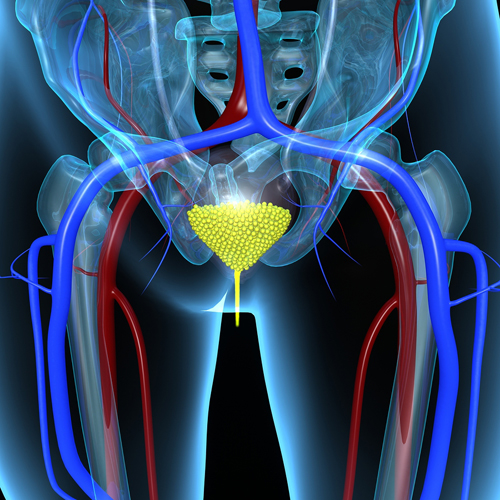Over the years, we’ve continually highlighted the numerous studies that have called into question the supposed safety of BPA. (Despite any claims to the contrary, it’s not very safe.) Well now, thanks to a new UCLA study, BPA and its “safer” substitutes are once again in the news. Inspired by this latest study, it seems like a good time to explore the issue in detail. Let’s begin by taking a look at what BPA is, what it’s used for, and what it does. Then we’ll take a look at some of the studies that have called its safety into question. And we’ll conclude by looking at the American Chemical Council’s implausible stand on the issue.
BPA and BPS Background
Bisphenol-A (BPA or 4,4′-isopropylidenediphenol) is a polymerizing agent used in plastic bottles and a number of routinely used consumer items.1 Mahlet D. Mersha, Bansri M. Patel, Dipen Patel, et al. “Effects of BPA and BPS exposure limited to early embryogenesis persist to impair non-associative learning in adults.” Behavioral and Brain Functions 201511:27. http://behavioralandbrainfunctions.biomedcentral.com/articles/10.1186/s12993-015-0071-y Specifically, it is used as a hardening agent in the polymerization process of polycarbonate plastics and resins as well as in the manufacture of commonly used products ranging from thermal paper used for sales receipts to flame retardant precursors, dental sealants, and the inside coating of beverage and food cans, including those used for infant formula.2 Eramo SUG, Sfasciotti GL, Brugnoletti O, Bossu M, Polimeni A. “Estrogenicity of bisphenol A released from sealants and composites: a review of the literature.” Annali di Stomatologia. 2010;1(3):14-21. http://www.ncbi.nlm.nih.gov/pmc/articles/PMC3254379/ , 3 Vandenberg LN, Colborn T, Hayes TB, et al. “Hormones and endocrine-disrupting chemicals: low-dose effects and nonmonotonic dose responses.” Endocr Rev. 2012;33(3):378–455. http://www.ncbi.nlm.nih.gov/pmc/articles/PMC3365860/ BPA can leach into food and beverages (particularly under heat) from cans, baby bottles, food-storage containers, and plastic tableware. But that’s just the tail of the tiger. It can also be found in contact lenses, eyeglass lenses, compact discs, water-supply pipes, cash register and ATM receipts, and dental sealants and composites.
It is classified as an endocrine disrupting chemical suspected as a primary cause of adverse health effects in mammals that range from infertility and cancer to behavioral disorders. The human health impact of BPA, which has been in commercial use since the 1960s, has been the focus of a number of studies in recent years. Considering its widespread use, it is not surprising that 90% of Americans have traceable amounts of BPA in their urine.4 Calafat AM, Kuklenyik Z, Reidy JA, et al. “Urinary concentrations of bisphenol A and 4-nonylphenol in a human reference population.” Environ Health Perspect. 2005;113(4):391–395. http://www.ncbi.nlm.nih.gov/pmc/articles/PMC1278476/ Among other things, BPA is suspected of inducing pre-term birth in pregnant women5 Cantonwine DE, Ferguson KK, Mukherjee B. “Urinary bisphenol A levels during pregnancy and risk of preterm birth.” Environ Health Perspect 2015 Sep; 123(9): 895–901. http://www.ncbi.nlm.nih.gov/pmc/articles/PMC4559950/ and is reported to cause adverse health effects including nervous system disorders in both children and adults.6 Rochester JR. “Bisphenol A and human health: a review of the literature.” Reprod Toxicol. 2013;42:132–155. http://www.ncbi.nlm.nih.gov/pubmed/23994667 , 7 Rosenfeld CS. “Bisphenol A and phthalate endocrine disruption of parental and social behaviors.” Front Neurosci. 2015;9(57):1–15. http://www.ncbi.nlm.nih.gov/pmc/articles/PMC4347611/
To put this in more technical terms, BPA is a synthetic, petroleum-based xenoestrogen that exhibits disruptive hormone-like properties, mimicking 17-β Estradiol.8 Vandenberg BPA, like the estradiol that it mimics, is known to act through different members of the estrogen receptor family which play critical roles in the regulation of embryonic development including neuronal survival and plasticity.9 Matsushima A, Kakuta Y, Teramoto T, et al. “Structural evidence for endocrine disruptor bisphenol A binding to human nuclear receptor ERR gamma.” J Biochem. 2007;142(4):517–524. http://www.ncbi.nlm.nih.gov/pubmed/17761695 Considering the fundamental and essential role of estradiol in development and the endocrine disrupting properties of BPA, a number of studies have focused on the biological effects of exposure to BPA. In addition to its impact on fetal development, many of those studies have found that exposure to BPA negatively impacts nervous system function, with chronic exposure leading to an increase in dopamine D1 receptor expression in the limbic forebrain (which is associated with hyperactivity), attention deficit disorders, and heightened sensitivity to drugs of abuse.10 Suzuki T, Mizuo K, Nakazawa H, Funae Y, et al. “Prenatal and neonatal exposure to bisphenol-A enhances the central dopamine D1 receptor-mediated action in mice: enhancement of the methamphetamine-induced abuse state.” Neuroscience. 2003;117(3):639–644. http://www.ncbi.nlm.nih.gov/pubmed/12617968 , 11 Tanida T, Warita K, Ishihara K, et al. “Fetal and neonatal exposure to three typical environmental chemicals with different mechanisms of action: mixed exposure to phenol, phthalate, and dioxin cancels the effects of sole exposure on mouse midbrain dopaminergic nuclei.” Toxicol Lett. 2009;189(1):40–47. http://www.ncbi.nlm.nih.gov/pubmed/19481886 In other words, exposure to BPA makes it easier to become addicted to drugs. Furthermore, in mouse embryos exposed to BPA, the neuronal defects it produces have been shown to be long-term, continuing into adulthood.12 Kundakovic MGK, Franks B, Madrid J, et al. “Sex-specific epigenetic disruption and behavioural changes following low-dose in utero bisphenol A exposure.” PNAS. 2013;110(24):9956–9961. http://www.ncbi.nlm.nih.gov/pmc/articles/PMC3683772/
So How Big Is the Problem?
 In 2011, an estimated 10 billion pounds of BPA were produced for manufacturing polycarbonate plastic, making it one of the highest volume chemicals produced in the world.13 vom Saal FS, Nagel SC, Benjamin L, et al. “The estrogenic endocrine disrupting chemical bisphenol A (BPA) and obesity”. Molecular and Cellular Endocrinology. Environment, Epigenetics and Reproduction 354 (1–2): 74–84. http://www.ncbi.nlm.nih.gov/pmc/articles/PMC3306519/ According to a 2015 Global Industry Analysts report, the global market is expected to reach 7.3 million tons by 2020.14 http://www.slideshare.net/GlobalIndustryAnalystsInc/bisphenol-a-a-global-strategic-business-report Also, according to a 2015 U.S. EPA action plan, over 1 million pounds of BPA are “released” into the U.S. environment annually.15 “Bisphenol A (BPA) Action Plan.” EPA. Oct 2015. (Accessed 7 Feb 2016.) http://www.epa.gov/assessing-and-managing-chemicals-under-tsca/bisphenol-bpa-action-plan And finally, significant levels of BPA have been measured in ambient air,16 Matsumoto H, Adachi S, Suzuki Y. “Bisphenol A in ambient air particulates responsible for the proliferation of MCF-7 human breast cells and its concentration changes over 6 months.” Arch Environ Contam Toxicol, 48, 459–466. http://www.ncbi.nlm.nih.gov/pubmed/15883673 house dust,17 Wang W, Abualnaja KO, Asimakopoulos AG. “A comparative assessment of human exposure to tetrabromobisphenol A and eight bisphenols including bisphenol A via indoor dust ingestion in twelve countries.” Environ Int. 2015 Oct;83:183-91. http://www.ncbi.nlm.nih.gov/pubmed/26177148 and river and drinking water.18 Rodriguez-Mozaz S, de Alda ML, Barcelo D. “Analysis of bisphenol A in natural waters by means of an optical immmunosensor.” Water Res, 39, 5071–5079. http://www.ncbi.nlm.nih.gov/pubmed/16337256
In 2011, an estimated 10 billion pounds of BPA were produced for manufacturing polycarbonate plastic, making it one of the highest volume chemicals produced in the world.13 vom Saal FS, Nagel SC, Benjamin L, et al. “The estrogenic endocrine disrupting chemical bisphenol A (BPA) and obesity”. Molecular and Cellular Endocrinology. Environment, Epigenetics and Reproduction 354 (1–2): 74–84. http://www.ncbi.nlm.nih.gov/pmc/articles/PMC3306519/ According to a 2015 Global Industry Analysts report, the global market is expected to reach 7.3 million tons by 2020.14 http://www.slideshare.net/GlobalIndustryAnalystsInc/bisphenol-a-a-global-strategic-business-report Also, according to a 2015 U.S. EPA action plan, over 1 million pounds of BPA are “released” into the U.S. environment annually.15 “Bisphenol A (BPA) Action Plan.” EPA. Oct 2015. (Accessed 7 Feb 2016.) http://www.epa.gov/assessing-and-managing-chemicals-under-tsca/bisphenol-bpa-action-plan And finally, significant levels of BPA have been measured in ambient air,16 Matsumoto H, Adachi S, Suzuki Y. “Bisphenol A in ambient air particulates responsible for the proliferation of MCF-7 human breast cells and its concentration changes over 6 months.” Arch Environ Contam Toxicol, 48, 459–466. http://www.ncbi.nlm.nih.gov/pubmed/15883673 house dust,17 Wang W, Abualnaja KO, Asimakopoulos AG. “A comparative assessment of human exposure to tetrabromobisphenol A and eight bisphenols including bisphenol A via indoor dust ingestion in twelve countries.” Environ Int. 2015 Oct;83:183-91. http://www.ncbi.nlm.nih.gov/pubmed/26177148 and river and drinking water.18 Rodriguez-Mozaz S, de Alda ML, Barcelo D. “Analysis of bisphenol A in natural waters by means of an optical immmunosensor.” Water Res, 39, 5071–5079. http://www.ncbi.nlm.nih.gov/pubmed/16337256
Given the amount of BPA in the environment and the number of reports incriminating BPA in contributing to adverse health effects–not to mention a considerable increase in public awareness–some industries in the United States have decided not to wait for the FDA and have initiated self-regulatory measures, moving towards voluntary replacement of BPA with the reputedly “safer” substitute bisphenol-S (BPS or 4,4′-sulfonlydiphenol). Unfortunately, BPS shares significant structural similarity to BPA…and thus to estradiol. Not surprisingly then, a number of studies have shown that BPS has comparable anti-androgenic effects and apparently regulates estrogenic transcription at a level comparable to estrogen itself.19 Grignard E, Lapenna S, Bremer S. “Weak estrogenic transcriptional activities of bisphenol A and bisphenol S.” Toxicol In Vitro. 2012;26(5):727–731. http://www.ncbi.nlm.nih.gov/pubmed/22507746 , 20 Eladak S, Grisin T, Moison D, et al. “A new chapter in the bisphenol A story: bisphenol S and bisphenol F are not safe alternatives to this compound.” Fertil Steril. 2015;103(1):11–21. http://www.ncbi.nlm.nih.gov/pubmed/25475787 But it’s worse than that. As we warned you last year, BPS is not only not safer than BPA–it’s most likely even more disruptive. (Note: In 2012, the FDA finally acted–in the smallest possible way they could and banned the use of BPA in all baby bottles, sippy cups and infant formula packaging. Let’s be clear, it was not because the FDA had concluded it was a problem but because most manufacturers of these products had already dropped BPA in favor of BPS and BFA, which they were erroneously able to pitch to the public as “safer” alternatives.)
The Current BPA, BPS Study that Inspired this Newsletter
 The study of the moment, which was published just a couple of months ago in the journal Endocrinology, demonstrated that alternatives to BPA (notably BPS) used in the manufacturing of BPA-free products are not necessarily safer.21 Wenhui Qiu, Yali Zhao, Ming Yang, Nancy L. Wayne, et al. “Actions of Bisphenol A and Bisphenol S on the Reproductive Neuroendocrine System During Early Development in Zebrafish.” Endocrinology December 10, 2015. http://press.endocrine.org/doi/abs/10.1210/en.2015-1785 Furthermore, this is the first study to describe the impact of low-level BPA and BPS exposure on the Kiss/Kiss receptor system during development. Kiss/Kiss is involved in the regulation of endocrine function and appears to play a role in the onset of puberty. Mutations in the genes associated with Kiss/Kiss have been linked to hypogonadotropic hypogonadism (a condition in which the male testes and female ovaries produce little or no sex hormones) and central precocious puberty. The study is also the first to report that BPA and BPS affect multiple cellular pathways during embryonic development in any species. According to senior author and reproductive endocrinologist, Nancy Wayne, “Our study shows that making plastic products with BPA alternatives does not necessarily leave them safer. Our findings are frightening and important. Consider it the aquatic version [the study was conducted on zebrafish] of the canary in the coal mine.”22 Elaine Schmidt. “Chemical used to replace BPA in plastic accelerates embryonic development, disrupts reproductive system. UCLA Newsroom. February 01, 2016. (Accessed 4 Feb 2015.) http://newsroom.ucla.edu/releases/chemical-used-to-replace-bpa-in-plastic-accelerates-embryonic-development-disrupts-reproductive-system
The study of the moment, which was published just a couple of months ago in the journal Endocrinology, demonstrated that alternatives to BPA (notably BPS) used in the manufacturing of BPA-free products are not necessarily safer.21 Wenhui Qiu, Yali Zhao, Ming Yang, Nancy L. Wayne, et al. “Actions of Bisphenol A and Bisphenol S on the Reproductive Neuroendocrine System During Early Development in Zebrafish.” Endocrinology December 10, 2015. http://press.endocrine.org/doi/abs/10.1210/en.2015-1785 Furthermore, this is the first study to describe the impact of low-level BPA and BPS exposure on the Kiss/Kiss receptor system during development. Kiss/Kiss is involved in the regulation of endocrine function and appears to play a role in the onset of puberty. Mutations in the genes associated with Kiss/Kiss have been linked to hypogonadotropic hypogonadism (a condition in which the male testes and female ovaries produce little or no sex hormones) and central precocious puberty. The study is also the first to report that BPA and BPS affect multiple cellular pathways during embryonic development in any species. According to senior author and reproductive endocrinologist, Nancy Wayne, “Our study shows that making plastic products with BPA alternatives does not necessarily leave them safer. Our findings are frightening and important. Consider it the aquatic version [the study was conducted on zebrafish] of the canary in the coal mine.”22 Elaine Schmidt. “Chemical used to replace BPA in plastic accelerates embryonic development, disrupts reproductive system. UCLA Newsroom. February 01, 2016. (Accessed 4 Feb 2015.) http://newsroom.ucla.edu/releases/chemical-used-to-replace-bpa-in-plastic-accelerates-embryonic-development-disrupts-reproductive-system
Wayne and her colleagues exposed zebrafish to low levels of both BPA and BPS and looked at the impact of the chemicals on genes and brain cells that control reproduction. (Zebrafish have often been used to study the impact of plastic additives because their transparent embryos allow scientists to see and monitor cell growth.) They found that low levels of BPS and BPA had similar impacts on the embryo. In the presence of either BPA or BPS, embryonic development was accelerated, with BPA also causing premature birth. The researchers expressed surprise at finding that both BPA and BPS exert their effects partly through an estrogen system and partly through a thyroid hormone system. “Most people think of BPA as mimicking the effects of estrogen,” Wayne said. “But our work shows that it also mimics the actions of thyroid hormone.” Thyroid hormone has a significant influence on brain development during gestation, so the research could have important implications for understanding general embryonic and fetal development, including in humans.
Other Recent Studies on BPA and BPS
 Some 20 years ago, I first told you that xenoestrogens can be potent in amounts even as small as a billionth of a gram. It turns out I may have understated the problem. In a 2013 study, Texas researchers found that as little as one part per trillion of BPS can interfere with the normal functioning of a cell, in some cases leading to cell death.23 René Viñas, and Cheryl S. Watson. “Bisphenol S Disrupts Estradiol-Induced Nongenomic Signaling in a Rat Pituitary Cell Line: Effects on Cell Functions.” Environ Health Perspectives Volume 121 | Issue 3 | March 2013. http://ehp.niehs.nih.gov/1205826/ Another study of zebrafish, this one out of Canada, found BPA accelerates neural cell growth by 180% for fish exposed to extremely low levels; but it was even worse for BPS, which explodes neural growth to 240%.24 Cassandra D. Kincha, Kingsley Ibhazehiebob, Joo-Hyun Jeongb, et al. “Low-dose exposure to bisphenol A and replacement bisphenol S induces precocious hypothalamic neurogenesis in embryonic zebrafish.” PNAS vol. 112 no. 5. http://www.pnas.org/content/112/5/1475.full.pdf
Some 20 years ago, I first told you that xenoestrogens can be potent in amounts even as small as a billionth of a gram. It turns out I may have understated the problem. In a 2013 study, Texas researchers found that as little as one part per trillion of BPS can interfere with the normal functioning of a cell, in some cases leading to cell death.23 René Viñas, and Cheryl S. Watson. “Bisphenol S Disrupts Estradiol-Induced Nongenomic Signaling in a Rat Pituitary Cell Line: Effects on Cell Functions.” Environ Health Perspectives Volume 121 | Issue 3 | March 2013. http://ehp.niehs.nih.gov/1205826/ Another study of zebrafish, this one out of Canada, found BPA accelerates neural cell growth by 180% for fish exposed to extremely low levels; but it was even worse for BPS, which explodes neural growth to 240%.24 Cassandra D. Kincha, Kingsley Ibhazehiebob, Joo-Hyun Jeongb, et al. “Low-dose exposure to bisphenol A and replacement bisphenol S induces precocious hypothalamic neurogenesis in embryonic zebrafish.” PNAS vol. 112 no. 5. http://www.pnas.org/content/112/5/1475.full.pdf
And it’s not just animal studies; human studies have also found that low level exposure to BPA and BPS is problematic. For example, a 2015 study published in Environmental Research found elevated exposure to environmental chemicals, including BPA, can lead to cancer and atherosclerosis.25 Asimakopoulos AG, Xue J, De Carvalho BP, et al. “Urinary biomarkers of exposure to 57 xenobiotics and its association with oxidative stress in a population in Jeddah, Saudi Arabia.” Environ Res. 2015 Dec 3. pii: S0013-9351(15)30155-9. http://www.ncbi.nlm.nih.gov/pubmed/26654562 The study focused on the association between exposure to xenoestrogens and oxidative stress–specifically, the oxidative stress biomarker, 8-hydroxy-2′-deoxyguanosine (8OHDG). Using data from a population in Jeddah, Saudi Arabia, the study found that the concentrations of metabolites of DEHP, phthalic acid, BPA, BPS, and methyl-protocatechuic acid are significantly associated with the oxidative stress biomarker 8OHDG. In addition, the concentrations of bisphenol S (BPS) were higher in the studied population than those of bisphenol A (BPA).
A second 2015 human population study, this one published in the Journal of Toxicology and Environmental Health, determined the levels of BPA and BPS in different thermal receipts, randomly collected from different locations in São Paulo State, Brazil, including receipts from supermarkets, general and fast-food restaurants, gas stations, bus and airplane tickets, and credit card and bank accounts.26 Rocha BA, Azevedo LF, Gallimberti M, Campiglia AD, Barbosa F Jr1. “High Levels of Bisphenol A and Bisphenol S in Brazilian Thermal Paper Receipts and Estimation of Daily Exposure.” J Toxicol Environ Health A. 2015;78(18):1181-8. http://www.ncbi.nlm.nih.gov/pubmed/26407846 The obtained values were higher than had been previously reported in other countries. The estimated daily intake through dermal absorption from the handling of thermal receipt papers was estimated on the basis of concentrations and frequencies of handling of papers by humans in both the general population and occupationally exposed individuals. The result was that the median daily intake for the general population was 1.42 μg/d, which is high. And for those who were occupationally exposed, it was an astonishing 71 μg/d.
And yet a third 2015 human population study, this one published in Behavioral and Brain Functions, found that the effects of embryonic exposure to extremely low levels of BPA and BPS persist into adulthood, affecting neural functionality.27 Mersha MD, Patel BM, Patel D, Richardson BN, Dhillon HS. “Effects of BPA and BPS exposure limited to early embryogenesis persist to impair non-associative learning in adults.” Behav Brain Funct. 2015 Sep 17;11:27. http://www.ncbi.nlm.nih.gov/pmc/articles/PMC4573949/ These long-term effects are in line with recommended alternate low-dose chemical safety testing approaches.
But BPF May be the Worst of All
Environmental Health Perspectives compared 17 studies that tested BPS and/or BPF along with BPA in the same assays, allowing their hormonal potencies and mechanisms of action to be directly compared.28 Johanna R. Rochester and Ashley L. Bolden. “Bisphenol S and F: A Systematic Review and Comparison of the Hormonal Activity of Bisphenol A Substitutes.” Environmental Health Perspectives. Volume 123 | Issue 7 | July 2015. http://ehp.niehs.nih.gov/1408989/
The average estrogenic potency for BPF compared with BPA was 1.07 ± 1.20, with a range of 0.10–4.83. These results indicate that the potency of BPF is at least as strong as BPA–and, in fact, may be even more potent. Further, the analysis showed that BPS and BPF have potencies in the same order of magnitude as BPA in regard to androgenic, antiandrogenic, antiestrogenic, aryl hydrocarbon activity (which plays a role in cancer development, infertility, and immunotoxicity29 Emily A Stevens, Joshua D Mezrich, and Christopher A Bradfield. “The aryl hydrocarbon receptor: a perspective on potential roles in the immune system.” Immunology. 2009 Jul; 127(3): 299–311. http://www.ncbi.nlm.nih.gov/pmc/articles/PMC2712099/ ), and in the inhibitory hormonal signaling in fat cells (which can lead to weight gain and unfavorable body fat composition, not to mention having negative effects on satiety, fertility, reproduction, and in the formation of blood cells).30 Morrison RF, Farmer SR. “Hormonal signaling and transcriptional control of adipocyte differentiation.” J Nutr. 2000 Dec;130(12):3116S-3121S. http://jn.nutrition.org/content/130/12/3116S.long
Fortunately, BPF has not made its way into many consumer products yet; it’s mostly used in the paints and coatings industry. However, its use in resin coatings means that it could ultimately be used in place of BPA in food can linings. (Note: A resin code of 7 appearing on plastic containers indicates that the container may be made of a BPA-containing plastic, but will not necessarily be found on cans that contain BPA in their linings.)
Conclusion
So, where do we stand with BPA, BPS, and BPF? Not surprisingly, the American Chemical Council (ACC), which represents BPA manufacturers, disagreed with the findings of the UCLA BPA study. In a statement provided to CNN, they said, “Many government bodies around the world have evaluated the scientific evidence on BPA and have clearly stated that BPA is safe for use. For example, the U.S. Food and Drug Administration (FDA) responded recently to the question, ‘Is BPA safe?’ with one unambiguous word: ‘Yes.'31 “Questions & Answers on Bisphenol A (BPA) Use in Food Contact Applications.” FDA 02/05/2016. (Accessed 5 Feb 2016.) http://www.fda.gov/Food/IngredientsPackagingLabeling/FoodAdditivesIngredients/ucm355155.htm In comparison, the results of this new study on zebrafish provide little or no meaningful information to assess the safety of BPA.”32 Sandee LaMotte. “BPA-free plastic alternatives may not be safe as you think.” CNN February 1, 2016. (Accessed 5 Feb 2016.) http://www.cnn.com/2016/02/01/health/bpa-free-alternatives-may-not-be-safe/
But that statement is just a tad disingenuous on all points, to say the least. In fact, a number of countries around the world including France, China, Malaysia, Denmark, and Canada, have banned the use of BPA in any food containers. And 10 states including California have banned its use in any bottles or cups designed for children. So, clearly, not all government bodies around the world are on board with BPA.
And as for the ACA claim that the FDA has “unambiguously” declared BPA safe, that too is a skosh disingenuous. In 2012, following in the footsteps of other countries that had already taken action, as well as a number of U.S. states that had jumped the FDA and taken the lead on the issue, the FDA banned the use of BPA in all baby bottles, sippy cups and infant formula packaging. In truth, their endorsement of BPA is, at best, qualified. To quote from the same document the ACA cited, the FDA’s current position is:
“FDA continues to review the available information and studies on BPA and will update its assessment of BPA and take additional action if warranted. FDA will also continue to consult with other expert agencies in the federal government, including the National Institutes of Health (and the National Toxicology Program), the Environmental Protection Agency, the Consumer Product Safety Commission, and the Centers for Disease Control and Prevention. And FDA will continue to participate in discussions with our international regulatory and public health counterparts who are also engaged in assessing the safety of BPA.”33 “Bisphenol A (BPA): Use in Food Contact Application.” FDA Updated November 2014. (Accessed 13 Feb 2016.) http://www.fda.gov/NewsEvents/PublicHealthFocus/ucm064437.htm
So clearly, the FDA’s position on the safety of BPA is not an “unambiguous yes.” It is most definitely qualified–and most likely temporary.
The bottom line is that although the safety of BPA and its clones is highly open to question, it is still to be found in many consumer products such as water bottles, food-storage containers and plastic tableware, as well as contact lenses, eyeglass lenses, compact discs, water-supply pipes, credit card receipts, and some dental sealants and composites.
Forewarned is forearmed. You would do well to avoid BPA and all its cousins as much as possible. And considering that they’re found in the urine of 90% of all Americans, you might want to think about regularly doing a full body detox. (Note: BPA lodges in your fat cells and liver and can lead to liver cancer. But it also can cause chronic kidney disease. Any juice fast that gets rid of fat cells will help purge the BPA from those cells, but you also want to do the liver detox and the kidney flush to remove the toxins from those organs to prevent the onset of disease. In other words, you want to do a regular whole body detox.)

References
| ↑1 | Mahlet D. Mersha, Bansri M. Patel, Dipen Patel, et al. “Effects of BPA and BPS exposure limited to early embryogenesis persist to impair non-associative learning in adults.” Behavioral and Brain Functions 201511:27. http://behavioralandbrainfunctions.biomedcentral.com/articles/10.1186/s12993-015-0071-y |
|---|---|
| ↑2 | Eramo SUG, Sfasciotti GL, Brugnoletti O, Bossu M, Polimeni A. “Estrogenicity of bisphenol A released from sealants and composites: a review of the literature.” Annali di Stomatologia. 2010;1(3):14-21. http://www.ncbi.nlm.nih.gov/pmc/articles/PMC3254379/ |
| ↑3 | Vandenberg LN, Colborn T, Hayes TB, et al. “Hormones and endocrine-disrupting chemicals: low-dose effects and nonmonotonic dose responses.” Endocr Rev. 2012;33(3):378–455. http://www.ncbi.nlm.nih.gov/pmc/articles/PMC3365860/ |
| ↑4 | Calafat AM, Kuklenyik Z, Reidy JA, et al. “Urinary concentrations of bisphenol A and 4-nonylphenol in a human reference population.” Environ Health Perspect. 2005;113(4):391–395. http://www.ncbi.nlm.nih.gov/pmc/articles/PMC1278476/ |
| ↑5 | Cantonwine DE, Ferguson KK, Mukherjee B. “Urinary bisphenol A levels during pregnancy and risk of preterm birth.” Environ Health Perspect 2015 Sep; 123(9): 895–901. http://www.ncbi.nlm.nih.gov/pmc/articles/PMC4559950/ |
| ↑6 | Rochester JR. “Bisphenol A and human health: a review of the literature.” Reprod Toxicol. 2013;42:132–155. http://www.ncbi.nlm.nih.gov/pubmed/23994667 |
| ↑7 | Rosenfeld CS. “Bisphenol A and phthalate endocrine disruption of parental and social behaviors.” Front Neurosci. 2015;9(57):1–15. http://www.ncbi.nlm.nih.gov/pmc/articles/PMC4347611/ |
| ↑8 | Vandenberg |
| ↑9 | Matsushima A, Kakuta Y, Teramoto T, et al. “Structural evidence for endocrine disruptor bisphenol A binding to human nuclear receptor ERR gamma.” J Biochem. 2007;142(4):517–524. http://www.ncbi.nlm.nih.gov/pubmed/17761695 |
| ↑10 | Suzuki T, Mizuo K, Nakazawa H, Funae Y, et al. “Prenatal and neonatal exposure to bisphenol-A enhances the central dopamine D1 receptor-mediated action in mice: enhancement of the methamphetamine-induced abuse state.” Neuroscience. 2003;117(3):639–644. http://www.ncbi.nlm.nih.gov/pubmed/12617968 |
| ↑11 | Tanida T, Warita K, Ishihara K, et al. “Fetal and neonatal exposure to three typical environmental chemicals with different mechanisms of action: mixed exposure to phenol, phthalate, and dioxin cancels the effects of sole exposure on mouse midbrain dopaminergic nuclei.” Toxicol Lett. 2009;189(1):40–47. http://www.ncbi.nlm.nih.gov/pubmed/19481886 |
| ↑12 | Kundakovic MGK, Franks B, Madrid J, et al. “Sex-specific epigenetic disruption and behavioural changes following low-dose in utero bisphenol A exposure.” PNAS. 2013;110(24):9956–9961. http://www.ncbi.nlm.nih.gov/pmc/articles/PMC3683772/ |
| ↑13 | vom Saal FS, Nagel SC, Benjamin L, et al. “The estrogenic endocrine disrupting chemical bisphenol A (BPA) and obesity”. Molecular and Cellular Endocrinology. Environment, Epigenetics and Reproduction 354 (1–2): 74–84. http://www.ncbi.nlm.nih.gov/pmc/articles/PMC3306519/ |
| ↑14 | http://www.slideshare.net/GlobalIndustryAnalystsInc/bisphenol-a-a-global-strategic-business-report |
| ↑15 | “Bisphenol A (BPA) Action Plan.” EPA. Oct 2015. (Accessed 7 Feb 2016.) http://www.epa.gov/assessing-and-managing-chemicals-under-tsca/bisphenol-bpa-action-plan |
| ↑16 | Matsumoto H, Adachi S, Suzuki Y. “Bisphenol A in ambient air particulates responsible for the proliferation of MCF-7 human breast cells and its concentration changes over 6 months.” Arch Environ Contam Toxicol, 48, 459–466. http://www.ncbi.nlm.nih.gov/pubmed/15883673 |
| ↑17 | Wang W, Abualnaja KO, Asimakopoulos AG. “A comparative assessment of human exposure to tetrabromobisphenol A and eight bisphenols including bisphenol A via indoor dust ingestion in twelve countries.” Environ Int. 2015 Oct;83:183-91. http://www.ncbi.nlm.nih.gov/pubmed/26177148 |
| ↑18 | Rodriguez-Mozaz S, de Alda ML, Barcelo D. “Analysis of bisphenol A in natural waters by means of an optical immmunosensor.” Water Res, 39, 5071–5079. http://www.ncbi.nlm.nih.gov/pubmed/16337256 |
| ↑19 | Grignard E, Lapenna S, Bremer S. “Weak estrogenic transcriptional activities of bisphenol A and bisphenol S.” Toxicol In Vitro. 2012;26(5):727–731. http://www.ncbi.nlm.nih.gov/pubmed/22507746 |
| ↑20 | Eladak S, Grisin T, Moison D, et al. “A new chapter in the bisphenol A story: bisphenol S and bisphenol F are not safe alternatives to this compound.” Fertil Steril. 2015;103(1):11–21. http://www.ncbi.nlm.nih.gov/pubmed/25475787 |
| ↑21 | Wenhui Qiu, Yali Zhao, Ming Yang, Nancy L. Wayne, et al. “Actions of Bisphenol A and Bisphenol S on the Reproductive Neuroendocrine System During Early Development in Zebrafish.” Endocrinology December 10, 2015. http://press.endocrine.org/doi/abs/10.1210/en.2015-1785 |
| ↑22 | Elaine Schmidt. “Chemical used to replace BPA in plastic accelerates embryonic development, disrupts reproductive system. UCLA Newsroom. February 01, 2016. (Accessed 4 Feb 2015.) http://newsroom.ucla.edu/releases/chemical-used-to-replace-bpa-in-plastic-accelerates-embryonic-development-disrupts-reproductive-system |
| ↑23 | René Viñas, and Cheryl S. Watson. “Bisphenol S Disrupts Estradiol-Induced Nongenomic Signaling in a Rat Pituitary Cell Line: Effects on Cell Functions.” Environ Health Perspectives Volume 121 | Issue 3 | March 2013. http://ehp.niehs.nih.gov/1205826/ |
| ↑24 | Cassandra D. Kincha, Kingsley Ibhazehiebob, Joo-Hyun Jeongb, et al. “Low-dose exposure to bisphenol A and replacement bisphenol S induces precocious hypothalamic neurogenesis in embryonic zebrafish.” PNAS vol. 112 no. 5. http://www.pnas.org/content/112/5/1475.full.pdf |
| ↑25 | Asimakopoulos AG, Xue J, De Carvalho BP, et al. “Urinary biomarkers of exposure to 57 xenobiotics and its association with oxidative stress in a population in Jeddah, Saudi Arabia.” Environ Res. 2015 Dec 3. pii: S0013-9351(15)30155-9. http://www.ncbi.nlm.nih.gov/pubmed/26654562 |
| ↑26 | Rocha BA, Azevedo LF, Gallimberti M, Campiglia AD, Barbosa F Jr1. “High Levels of Bisphenol A and Bisphenol S in Brazilian Thermal Paper Receipts and Estimation of Daily Exposure.” J Toxicol Environ Health A. 2015;78(18):1181-8. http://www.ncbi.nlm.nih.gov/pubmed/26407846 |
| ↑27 | Mersha MD, Patel BM, Patel D, Richardson BN, Dhillon HS. “Effects of BPA and BPS exposure limited to early embryogenesis persist to impair non-associative learning in adults.” Behav Brain Funct. 2015 Sep 17;11:27. http://www.ncbi.nlm.nih.gov/pmc/articles/PMC4573949/ |
| ↑28 | Johanna R. Rochester and Ashley L. Bolden. “Bisphenol S and F: A Systematic Review and Comparison of the Hormonal Activity of Bisphenol A Substitutes.” Environmental Health Perspectives. Volume 123 | Issue 7 | July 2015. http://ehp.niehs.nih.gov/1408989/ |
| ↑29 | Emily A Stevens, Joshua D Mezrich, and Christopher A Bradfield. “The aryl hydrocarbon receptor: a perspective on potential roles in the immune system.” Immunology. 2009 Jul; 127(3): 299–311. http://www.ncbi.nlm.nih.gov/pmc/articles/PMC2712099/ |
| ↑30 | Morrison RF, Farmer SR. “Hormonal signaling and transcriptional control of adipocyte differentiation.” J Nutr. 2000 Dec;130(12):3116S-3121S. http://jn.nutrition.org/content/130/12/3116S.long |
| ↑31 | “Questions & Answers on Bisphenol A (BPA) Use in Food Contact Applications.” FDA 02/05/2016. (Accessed 5 Feb 2016.) http://www.fda.gov/Food/IngredientsPackagingLabeling/FoodAdditivesIngredients/ucm355155.htm |
| ↑32 | Sandee LaMotte. “BPA-free plastic alternatives may not be safe as you think.” CNN February 1, 2016. (Accessed 5 Feb 2016.) http://www.cnn.com/2016/02/01/health/bpa-free-alternatives-may-not-be-safe/ |
| ↑33 | “Bisphenol A (BPA): Use in Food Contact Application.” FDA Updated November 2014. (Accessed 13 Feb 2016.) http://www.fda.gov/NewsEvents/PublicHealthFocus/ucm064437.htm |












Is it true that the body uses
Is it true that the body uses fat cells to store all types of toxins? Is it safe to assume that as I burn stubborn belly fat that I’m also burning the toxins stored in the fat cells? Makes sense to me. It would also explain why I feel sick when I start losing weight/fat cells.
Actually, your body doesn’t
Actually, your body doesn’t “use up” fat cells. In fact, once you have a fat cell, it never goes away unless you have liposuction, which sucks out fat cells. Instead, fat cells are storage systems for energy that function like balloons. They expand and get bigger as they store more and more fat, and they shrink as the body draws on that fat (if you ever lower your calorie consumption enough to force it to do that) to produce energy. In other words, the number of fat cells never changes—only the amount of fat they store and their size.
Whenever your body needs to draw on the fat reserves in the fat cells, it doesn’t “burn” that fat in the cells. Instead, the fat cells release the fat into the bloodstream where your other cells metabolize it into acetyl-CoA, which is used by the cell mitochondria to produce energy. Unfortunately, in the process of releasing the fat from the fat cells and breaking it down inside your other body cells, any toxins stored along with the fat (and, yes, fat cells are a prime storage area for toxins) is released into the bloodstream. Those toxins are then processed by the liver and eliminated through the kidneys, which is why BPA affects the liver and kidneys so directly.
The bottom line is that toxins are not “burned” when you lose weight. Instead the toxins are released into the bloodstream, where they can affect every organ in your body. It’s why detoxing is so important when releasing toxins from fat cells.
I agree completely with this
I agree completely with this article regarding BPA being a hormone disruptor. However we see 1700+ patients a year and have found many of them with other complications. As BPA levels increase it creates concurrant amounts of lactic acid, causing extremely tight muscles, headaches and body aches. I surmise this is why there are an inordinate number of soft tissue injures in sports. Extremely high levels effect liver function to the point of jaundice and excessive ammonia. We have also found that in the long term it will soften the skeletal system.
BPF is actually worse in symptomology. I myself acquired it from coconut cream in a can. My thymus function dropped precipitously causing cold chills and severe uncontrollable shaking. Lactic acid levels went up with a very small amount of BFA causing a constant headache of level 4 to 5. My ANA increased creating blisters and nerve pain in the extremities and throat. A number of doses of Chelazyme from Biotics Research removed the BFA, however the symptoms are still lingering as of today, especially the blistering and nerve pain in the my extremities.
My wife some had different symptoms in that her thymus was overactive causing welts, rash and itching on her chest and vagina.